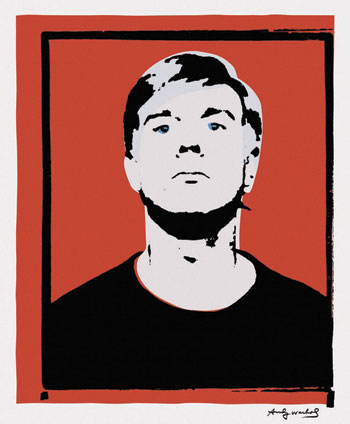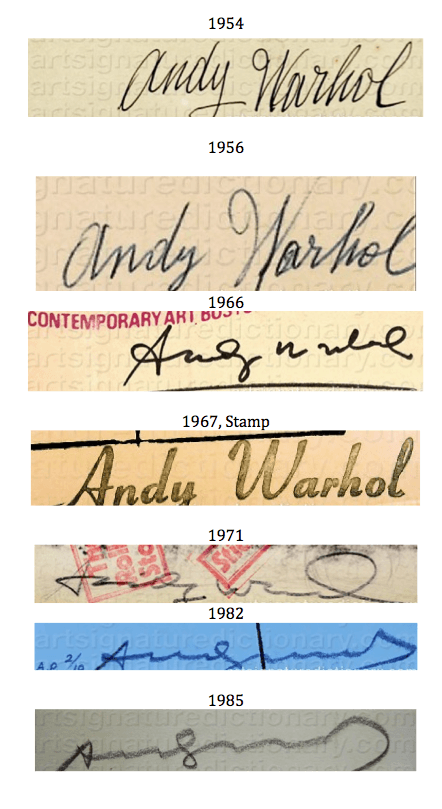
While the screenprinting process Andy Warhol employed is rather difficult, time consuming and expensive to reproduce, there are times in which a forged Andy Warhol print or canvas will pop up. Some of Warhol’s art has been authenticated either by proof of provenance or through approval of the Warhol Authentication Board, there are over 100,000 Warhol pieces in circulation, a large portion of which have not been authenticated by the board.
Although the Warhol Authentication Board is no longer a surefire source to confirm whether a print is an Andy Warhol original or not, there are certain aesthetic, compositional and physical qualities that can distinguish authentic Warhol pieces from forgeries. Some identifying elements to take into consideration when analyzing a Warhol print whose authentication is uncertain include the placement of his signature, the size of the print, the ink used, the paper type, any markings or stamps, and the date in which the print was created.
For example, if there is a Liz Taylor print that is signed as being created in 1970 and is on a large sheet of paper (40” x 40”), it most likely is not an authentic Warhol for two reasons: his Liz Taylor prints were created early in his career (in 1964), because of this, he did not yet experiment with screenprinting on large scale mediums.
Another telling sign is the style of Warhol’s signature on the piece. As Warhol’s art evolved over the years, so did his the way in which he signed (or stamped) his work. Depending on the time in which the print was created, Warhol’s signature varied from cursive and print, to initials and stamps. Even the most tenacious attempts to protect a screenprint cannot prevent a signature from fading, so if the signature is too crisp looking, it could signify a forgery.
The edition of the print is also an important factor when identifying an authentic Warhol. It could be that the print in question claims to be a trial proof edition, but there is an authenticated, recorded trial proof with the exact coloring and composition. Trial proofs are notable in that each proof is the only one of its kind, compositionally. There can be no two trial proofs alike, as trial proof editions were only printed once.
These minor details can amount to the difference between having an original Warhol masterpiece or the product of a scheming forger. Although there has been skepticism regarding Warhol authentication after the discontinuation of the Warhol Authentication Board, signature style, edition type, color composition and paper type are a few details that can identify an authentic Warhol.

Photos: Art Signature Dictionary

